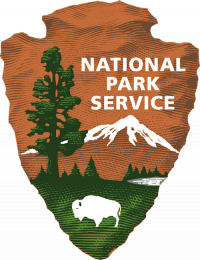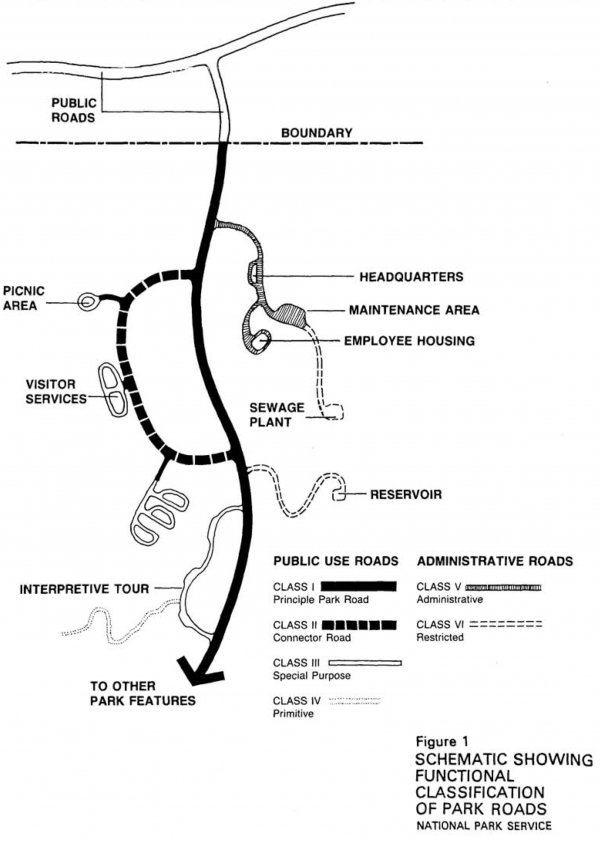No edit summary |
No edit summary |
||
| (One intermediate revision by the same user not shown) | |||
| Line 23: | Line 23: | ||
* Phone: Main visitor center phone number (local format) | * Phone: Main visitor center phone number (local format) | ||
{| class="wikitable" | {| class="wikitable" | ||
! | !Point of Interest | ||
! | !category | ||
! | !type | ||
! | !Naming convention | ||
!Comments | |||
|- | |- | ||
| | |Visitor Center | ||
| | |Tourist Attracting / Historic Site | ||
| | |Point | ||
|Visitor Center - <park name> | |||
| | | | ||
|- | |- | ||
| | |Trailhead | ||
| | |Outdoors | ||
| | |Point | ||
|<name of trailhead> - <park name> | |||
|This should be located at the start of a trail. Only trails accessible from a parking area or street. | |||
|- | |||
|Picnic Area | |||
|Park | |||
|Point or Area | |||
|<name of picnic area> - <park name> | |||
|Some larger picnic areas should be an Area Place, a small picnic area could be a Point Place. | |||
|- | |||
|Camping Area | |||
|Campground | |||
|Area | |||
|<campground name> - <park name> | |||
| | | | ||
|- | |- | ||
| | |Natural Feature | ||
| | |<Any Natural Feature> | ||
| | |Area | ||
| | |<name> | ||
|The National Park area place will cover the water feature layer. Natural features must be mapped in order to show up. | |||
|} | |} | ||
Latest revision as of 03:03, 21 April 2019
| Last update 05April2019 |
Background

The National Park Service (NPS) is part of the Department of the Interior and is responsible for care and operation of more than 400 sites. NPS has an overlap of responsibility with local communities, Indian Tribes, and other entities. With 275 million visitors per year, Wazers are going to be visiting these locations.
Park roads are constructed only where necessary, and only as necessary, to provide access for the protection, use and enjoyment of the natural, historical, cultural and recreational resources which constitute our National Park System. National park roadways, where they exist, are planned for leisurely sightseeing and are located with sensitive concern for the environment and designed with extreme care. They are often narrow, winding, and hilly. In some cases they take on the characteristics of interstates or major highways, such as around Washington, D.C.
Waze and National Park Service
Creating accurate and properly represented NPS landmarks and roads:
- Benefit large numbers of tourists and recreational users of NPS faculties,
- Allow Wazers to more quickly find important landmarks (points of interest), such as campgrounds, ranger stations, visitor centers...
Places
A National Park should be marked over its entire area as an Area Place. It should have the following basic information in WME.
- Address: Use the address of the main visitor center
- Name: Name of the National Park/Lakeshore/Refuge
- Categories: Park
- Website: Main park webpage
- Phone: Main visitor center phone number (local format)
| Point of Interest | category | type | Naming convention | Comments |
|---|---|---|---|---|
| Visitor Center | Tourist Attracting / Historic Site | Point | Visitor Center - <park name> | |
| Trailhead | Outdoors | Point | <name of trailhead> - <park name> | This should be located at the start of a trail. Only trails accessible from a parking area or street. |
| Picnic Area | Park | Point or Area | <name of picnic area> - <park name> | Some larger picnic areas should be an Area Place, a small picnic area could be a Point Place. |
| Camping Area | Campground | Area | <campground name> - <park name> | |
| Natural Feature | <Any Natural Feature> | Area | <name> | The National Park area place will cover the water feature layer. Natural features must be mapped in order to show up. |
Functional Classification
Pedestrian Path
At this time it is recommended that we do not map Pedestrian Paths
NPS Road Classes
For purposes of functional classification, the routes which make up a park road system are grouped based on use into three categories: Public Use Park Roads, Administrative Park Roads, and Urban Parkways and City Streets. Note that federal or state roads may exist within National Park System lands. This section only refers to the roads that are maintained by the NPS.
The assignment of a functional classification to a park road is not based on traffic volumes or design speed, but on the intended use or function of that particular road or route.
| NPS Class |
Name | Waze Road Treatment Suggested* |
Description |
| I (one) |
Principal Park Road, Rural Parkway | Primary Street or Street |
Roads which constitute the main access route, circulatory tour, or thoroughfare for park visitors. |
| II (two) |
Connector Park Road | Street | Roads which provide access within a park to areas of scenic, scientific, recreational or cultural interest, such as overlooks, campgrounds, etc. |
| III (three) |
Special Purpose Park Road | Parking Lot Road | Roads which provide circulation within public use areas, such as campgrounds, picnic areas, visitor center complexes, concessioneer facilities, etc. These roads generally serve low·speed traffic and are often designed for one-way circulation. |
| IV (four) |
Primitive Park Road | Off-road / Not maintained | Roads which provide circulation through remote areas and access to primitive campgrounds and undeveloped areas. These roads frequently have no minimum design standards and their use may be limited to specially equipped vehicles. |
| V (five) |
Administrative Access Road | Private Road | All public roads intended for access to administrative developments or structures such as park offices, employee quarters, or utility areas. |
| VI (six) |
Restricted Roads | Private Road | All roads normally closed to the public, including patrol roads, truck trails, and other similar roads. |
* Use the "unpaved" attribute checkbox for any roads that lack solid pavement.
The following diagram provides examples of where these road classes might be located in a typical National Park setting.

Editing Resources
NPS - Find a Park
The Find A Park page on the NPS website allows you to quick find park-specific resource through a series of interactive maps. Each park web page may have information on landmarks and roads that are important for Wazers visiting these sites.
NPS Transportation
The NPS Transportation maintains the Park Roads and Parkways Program (PRPP) which takes care of roads, parking lots, bridges, and other transportation resources in the National Parks. This site seems primarily internally directed towards NPS staff, but a useful technical resource is a 1984 Park Road Standards document that is still in effect today.
Similar Road Systems
{{Category:Style Guides]]